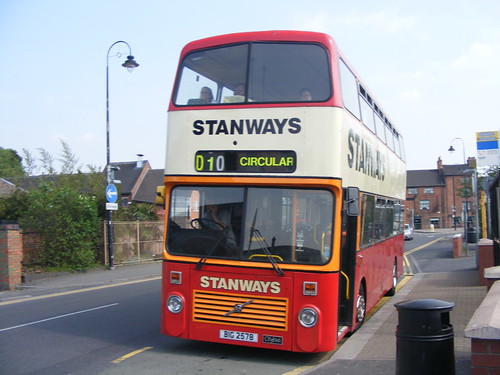25 Days to Green Travel: Day Seventeen - Public Transportation
Advantages of Going Public
In addition to the obvious positive environmental impacts of choosing public transportation over a car, there are a number of other reasons to hop on a bus or train.
Cost. Public transportation is almost always cheaper than renting a car and paying for gas. And it’s faster than walking so you can cover more ground in a day.
Convenience. In most major cities, public transportation will take you anywhere you want to go. Plus, you’ll never have to worry about parking a car or following street signs written only in Chinese. Just sit back, relax, and enjoy the ride.
Meeting the locals. Depending on where you’re headed, most of your fellow passengers will likely be natives. Strike up a conversation. You can practice your foreign language skills and learn about local culture and sites at the same time. And you never know; the person sitting next to you on the bus might be an English teacher who can help you buy a ticket and jump on your train before it leaves. It happened to me in Moscow.
Seeing the city. When you’re on a bus or tram, you’ll see parts of the city that may not be featured in guidebooks. You might even uncover an awesome market or hidden restaurant.
photo credit: Coradia1000
What You Should Know
Rules and laws. Before you hop on the train or bus, know the rules and the laws. In some countries, it seems like they’re intentionally trying to trick non-native speakers into buying the wrong ticket so they can catch them and fine them (ahemHUNGARYahem – but that’s a story for another day). Be aware of these kinds of (often legal) scams. Talk to fellow travelers and hostel workers and do your research. When in doubt, ask.
Be smart. Public transportation in general is perfectly safe, but it depends on where you are. Keep your guard up and be cautious; don’t leave your passport (or camera or money) in an easily accessible pocket in your backpack. Keep it in a money belt.
Observe. One of my biggest pet peeves in DC is the tourists crowding the Metro in the summer, standing on the left and the right. If they just looked around, they’d realize that everyone else is standing on the right and walking on the left. It’s simple, people! Watch what the locals are doing and mimic them. You’ll fit in more and they won’t be wishing you were back where you came from.
Be courteous. The treat others as you’d like to be treated rule applies anywhere. Move out of the way for people who need a seat more than you do – namely elderly, disabled, or very pregnant people. Learn to say “excuse me” and “please” in the native language and if you forget how, saying it in English with an apologetic or friendly look on your face is generally better than not saying it at all.
How to Find It
Tourist information. It’s a great place to start, but it’s not always open (and sometimes you need to take public transportation to get there). They’re often located near train or bus stations, though, so it’s worth a shot.
Front desk. If you’re staying at a hostel – or even a B&B or hotel – ask the person at the front desk about the best way to get around the city.
Other travelers. Getting around is also a good conversation starter with other travelers who have been in the city a few days. They can share their experiences with you so you don’t repeat their mistakes.
Online. If none of these work, most public transportation systems have websites, though they can be hard to decipher in another language and English versions aren’t always available. Of course, there’s always Google, traveler websites like TripAdvisor, and online and print travel guides.
Resources
Google maps
1. Click “Get directions” underneath the search box.
2. Enter your desired start and end addresses.
3. Click the “Get Directions button.” Google Maps will find driving directions between the two locations.
4. Click “Take Public Transit” at the top of the left panel to find public transportation routes. (This link will only appear when Google has public transit information for that area.)
1. Click “Get directions” underneath the search box.
2. Enter your desired start and end addresses.
3. Click the “Get Directions button.” Google Maps will find driving directions between the two locations.
4. Click “Take Public Transit” at the top of the left panel to find public transportation routes. (This link will only appear when Google has public transit information for that area.)
In the US try PublicTransportation.org, which includes iPod maps, to and from airports, and cities with light rail, or PublicRoutes. The latter also includes information for London
This is the seventeenth post in Go Green Travel Green’s 25 Days to Green Travel series. You can see the complete list of articles in the 25 Days to Green Travel Index.
If you haven’t already, subscribe to our e-newsletter and stay up to date - See top left column.



Comments